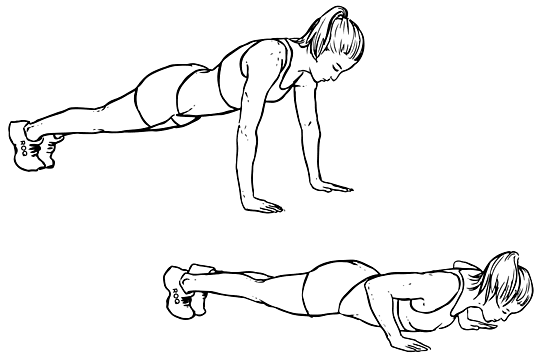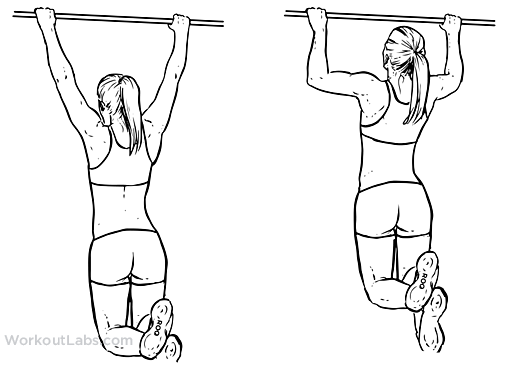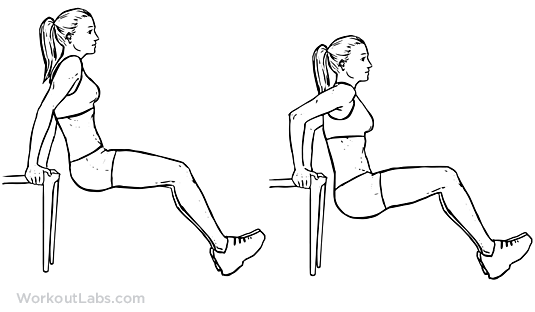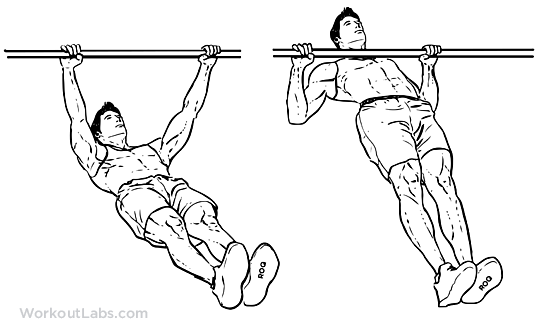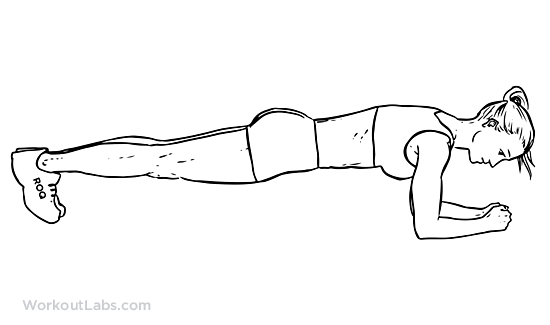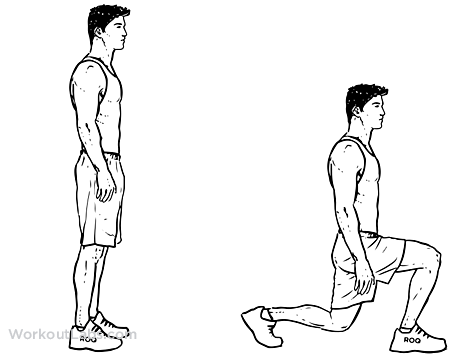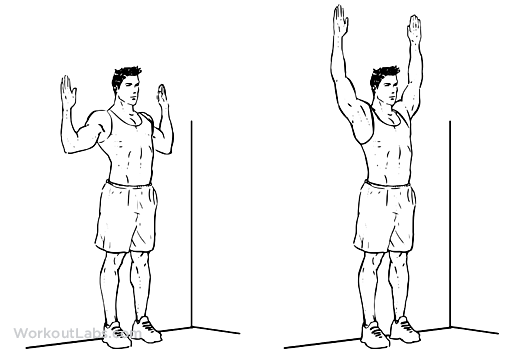1. The Push-up
The classic push-up trains your triceps, shoulders and chest – all key muscles for efficient propulsion in the pool. As a bonus, it teaches your core to keep your body in a straight line, which means better streamlining in the water too.
Here’s how to do it:
- Get down on your hands and knees & placing your hands slightly wider than your shoulders.
- Straighten your arms and then your legs. This is your starting position.
- Lower your body until your chest nearly touches the floor.
- Push yourself back up. This counts as one rep.
If you can’t do one push-up, start by doing them on your knees. Once you can do 15 controlled knee-push ups, it’s time to move onto full push-ups.
2. The Pull-up
The pull-up primarily trains your lats, biceps and forearms – all prime movers across the strokes. As well as building a strong back, pull-ups indirectly hit your core to build stability and control.
How to do it:
- Grab a bar with a grip slightly wider than shoulder-width, hands facing away from you.
- Hang without going limp. This is your starting position.
- Pull yourself up until your chin is above the bar and pause there momentarily.
- Slowly lower yourself back down. This counts as one rep.
It should be noted that pull-ups are a very difficult exercise. It can take many months to get even one repetition, so don’t beat yourself up if you can’t do any to begin with.
Instead, focus on doing negative reps. This means you grip the bar as in step 1. Then using your legs jump up to the top position, hold for 1-2 seconds and lower yourself back down slowly.
Over time this technique will build serious strength in your back and allow you to perform full pull-ups with ease.
3. The Dip
The dip lights up your triceps and chest muscles. Both are essential muscles for high-powered swimming, especially for freestyle and backstroke.
How to do it:
- Sit on a chair and place your hands directly beneath your shoulders
- Move your feet out in front of you & raise off the chair. This is your starting position.
- Lower yourself down slowly by bending your arms
- Straighten your arms and press your self back up.
4. The Inverted Row
The inverted row is great for strengthening your back muscles in the horizontal plane. If you can’t do a pull-up, these are a great alternative exercise to build impressive pulling strength for more effective swimming. They’re also great for swimmers because they help train postural muscles that are typically underdeveloped and build a more balanced physique.
How to do it:
- Find a table that can support your body weight.
- Lie underneath the table and grip the edge a little wider than shoulder-width apart
- Keeping your legs straight, pull your chest up to the table’s edge
- Lower yourself slowly back down again. This is one rep.
If you find this exercise too difficult you can bend your legs which will make it easier. If it’s still too difficult you can row using a doorframe instead.
5. The Plank
The king of core exercises, the plank will help you firm up your ab muscles, connect your pull and kick and build greater control in the water.
How to do it:
- Lie on your belly. Push your body up so you’re resting on your forearms and feet.
- Squeeze the muscles in your bum and make sure you’re parallel to the ground.
- You should keep a straight line from your head to your heels. Hold this position.
If the full plank is too hard, you can start on your knees instead (just like with push-ups). You’ll build enough strength to advance to the full plank in no time at all.
6. The Lunge
We can’t forget to train our legs – they power our kick and help us upgrade our starts and turns. The trusty lunge is a deceptively easy looking exercise that targets all the major muscles of the lower body. It’s also great for building hip, knee and ankle stability – all of which are common injury areas for swimmers.
Here’s how to do it:
- Stand up straight with your feet about hip-width apart
- Take a large step forward with your right leg
- Lower your body until your right thigh is parallel to the floor.
- Push into the ground with your right heel to drive yourself back up to standing. Then repeat on the opposite leg.
When lunging, watch that your knee doesn’t go over your toe. If it does, you need to take a bigger step. Aim to keep your front shin vertical for optimal mechanics.
7. The Scapular Wall Slide
If there was one exercise that could prevent 90% of swimming-related shoulder injuries, it’s scapular wall slides. These won’t get you heart rate pumping like the other exercises on this list, but they will keep your shoulders healthy by stabilising your scapula and boosting shoulder mobility.
How to do it:
- Stand with your back to a wall & flatten your lower back against it (you may have to half-squat to achieve this depending on your biomechanics)
- Raise your arms up so your elbows are at ninety degrees with the backs of your hands touching the wall
- Keeping your back and arms against the wall, slide your hands up overhead until you reach full extension.
- Slide your hands back down to the starting position. This is one rep.
Putting Your Program Together
To get the most from your home swimming workouts, we need to build these exercises into a workout that’ll challenge your muscles and build your metabolic capacity.
To do this we’re going to train them in a circuit style. This means you’ll perform each exercise for 45 seconds aiming to get as many reps as possible. Then rest for 15 seconds before moving onto the next exercise.
So you’ll do 45 seconds of push-ups, followed by 15 seconds rest.
Then you’ll move onto pull-ups for 45 seconds, followed by 15 seconds rest.
Then onto dops and so forth until you’ve completed all 7 exercises.
When you’ve done all the exercises that equal one round. Rest for 60-120 seconds and repeat the circuit 2 more times for a total of approximately 25 minutes.
Overall, it’ll look something like this:
| Exercise | Work (seconds) | Rest (seconds) |
|---|---|---|
| Knee Push-up | 45 | 15 |
| Negative Pull-up | 45 | 15 |
| Knee Push-up | 45 | 15 |
| Chair Dip | 45 | 15 |
| Lunge | 45 | 15 |
| Scapular Wall Slide | 45 | 15 |
| Knee Push-up | 45 | 15 |
| Knee Push-up | 45 | 15 |
| Rest 60-120 seconds and repeat X2 more circuits | ||
As you become stronger and fitter over a number of weeks, you can gradually increase the number of rounds up to 4-6 for a more challenging workout, or move to more difficult exercise variations.
If you find this workout too difficult you can reduce the work periods to 30s and extend the rest periods to 30s for an easier workout too.
Ideally, you’ll want to complete this workout on 3 non-consecutive days per week. Monday, Wednesday, Friday works well for most swimmers. If you’re swimming regularly, then doing it just once or twice per week will still give you benefits.
It’s always good to start at a level that feels easy for the first few weeks – especially if you’re new to home swimming workouts. This will give your body time to adapt and build momentum that’ll carry you for longer than if you just go hell for leather from the off.
In Conclusion
Dryland training is an excellent way to enhance your swimming performance by making you stronger, more powerful and less prone to injury in the water. It’s an excellent way to stay fit, even when you can’t make it to the pool.
This post showed you seven seriously effective exercises for swimming and how to put them into a workout that’ll push your swimming ability to new heights.
So what are you waiting for?
Set your timer and let’s get going!

